From Folk to Funk
From the Winter 2022 Issue
The Shook Twins are just getting started
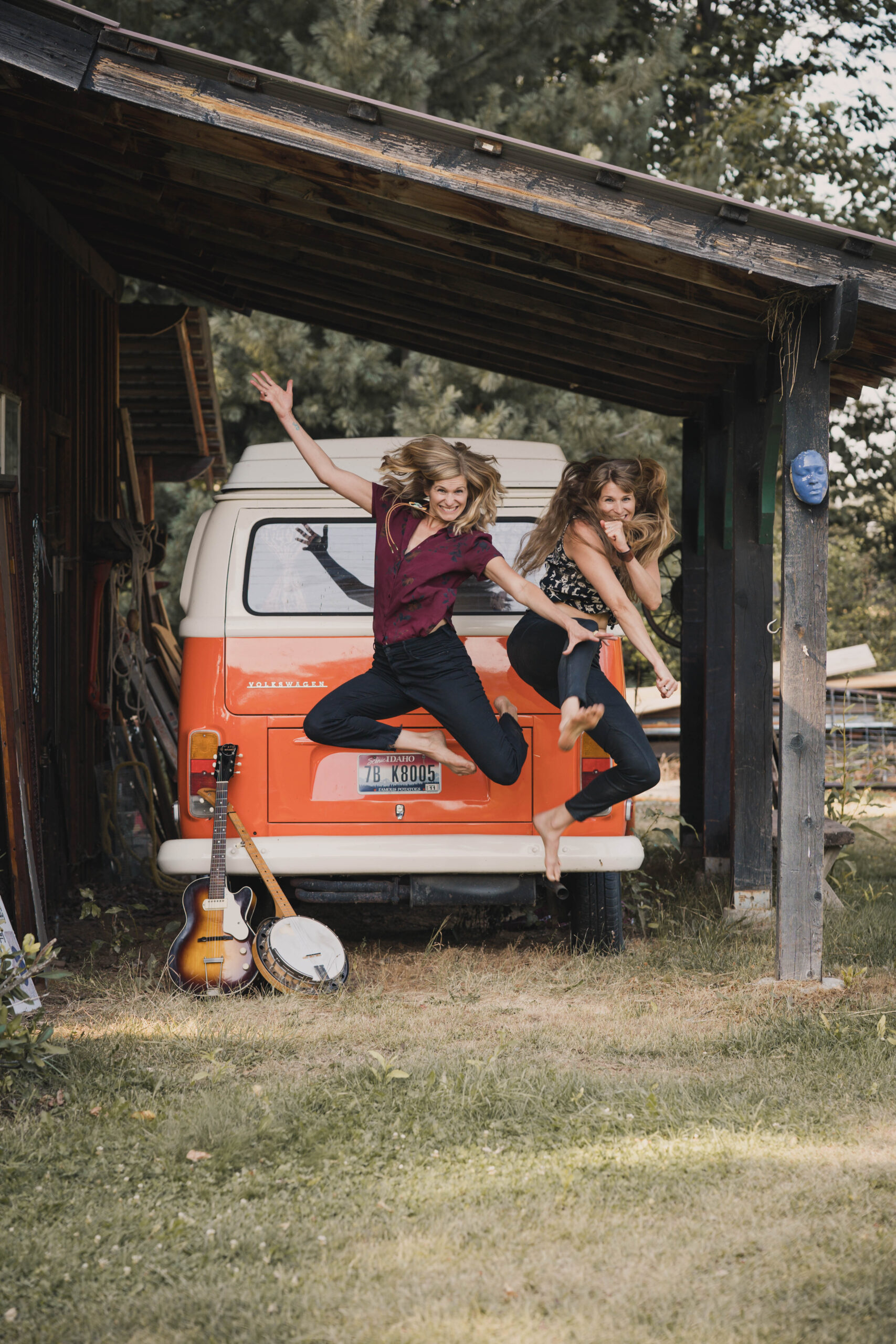
Katelyn and Laurie Shook are full of enthusiasm for their future in music. Photo by Rachael Baker.
From their humble beginnings singing in Sandpoint High School choir to sharing festival stages with some of the biggest names in music, Sandpoint’s Katelyn and Laurie Shook have taken their band Shook Twins from a fun artistic hobby to a full-time way of life. Sitting down at their family property, Laurie and Katelyn shared some thoughts on what it has been like playing in a band during a pandemic, influential periods in their life, and what the future holds for their band.
SM: Can you tell me what it was like weathering the pandemic as a full time band that tours a good portion of the year?
Laurie: We actually went into 2020 wanting to take a huge break, so it kind of worked out for us.
Katelyn: We were pretty burned out touring full time, and we told our whole team—the management and the agency—that we wanted to take a break. Especially because of my wedding, which was supposed to be in 2020.
L: Yeah, we’re actually pretty big homebodies, so it was nice to take a break.
What was it you needed a break from?
K: The grind of the road. It’s just really hard. It wears on you. It wears on our bodies mostly. As we’re getting older it hurts physically, and it wears on our relationships mentally. I was starting to feel a little disconnected with our audience. I wasn’t as happy as I wanted to be.
L: We end up doing a lot of work because we don’t tour with a tour manager. So that was a big part of it. The level that we were touring, which is like the “medium font Sprinter Size” tour as we call it, it just takes a lot of logistics and planning and that’s what I was specifically over, because I just wanted to be in the band and just show up and do the art. We had to do so much of the other stuff. The pandemic gave us a chance to regroup and realize what we really want, which was to just try to select the shows that bring us joy.
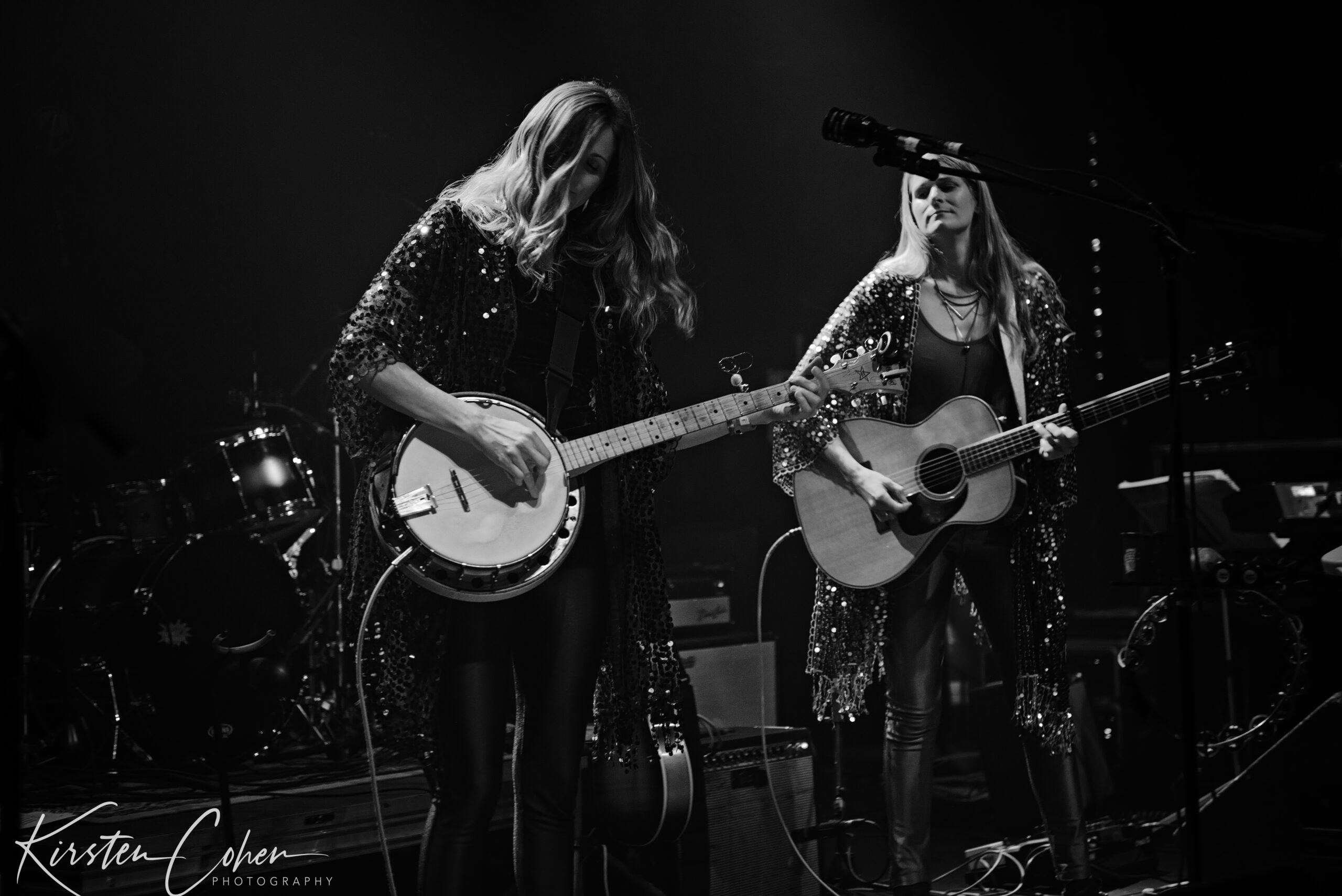
Laurie and Katelyn (from left) are accomplished musicians. Photo by Kristen Cohen.
You’ve lived and played music together for most of your lives. This year you took a break, living in separate cities. What brought that on and was it healthy to be apart for the first major portion of your lives?
L: It was very healthy.
K: I think when I moved back home to Sandpoint in June 2020 I was feeling a little lost. I was about to get married and I think we needed to separate a little bit. We’ve never lived apart for 37 years and we worked together all the time and we started realizing that maybe we needed to figure out what our own lives are. Moving home was really hard. Subconsciously it just sort of creeped in. It wasn’t like, “Oh my god, I don’t live with Laurie anymore, I’m freaking out.” It was like a slow depression movement, like “Oh god, I don’t know who I am without Laurie.” So we’ve been doing a lot of work around it actually, and we know that time and space apart is what’s going to cure it. Laurie loves to be home, too, and we both love to be around our parents and their rad properties, so it’s really hard for us to separate. That’s the reason why we’ve spent 37 years within arms’ reach of each other. We like to be doing the same thing in the same place at the same time.
L: And neither of us are going to deny the other happiness, and we also have the same best friends. We’ve really made it very difficult for ourselves, haven’t we?
How important is the crowd in making a great show?
L: The crowd is huge for us. Such a big deal.
K: Also lighting. And the space.
L: I think it’s equal parts. The venue and atmosphere that the venue provides, to me, dictates how the energy of the audience goes for the night.
K: When we started doing shows again, people were really hungry and grateful, but they were also really chatty and excited to see each other, so we were preparing ourselves for that, because that can get to us sometimes.
What’s your ideal crowd?
L: That’s tough, because we play soft, quiet, pretty, sweet songs, but we also play groovy songs that we want people to dance to.
K: We want the hoots!
L: Definitely want the hoots and laughter. We want people to feel comfortable in their own skin and feel excited and vocal and expressive, but when they’re caught by our lyrics or the feeling of the music, we want them to absorb it.
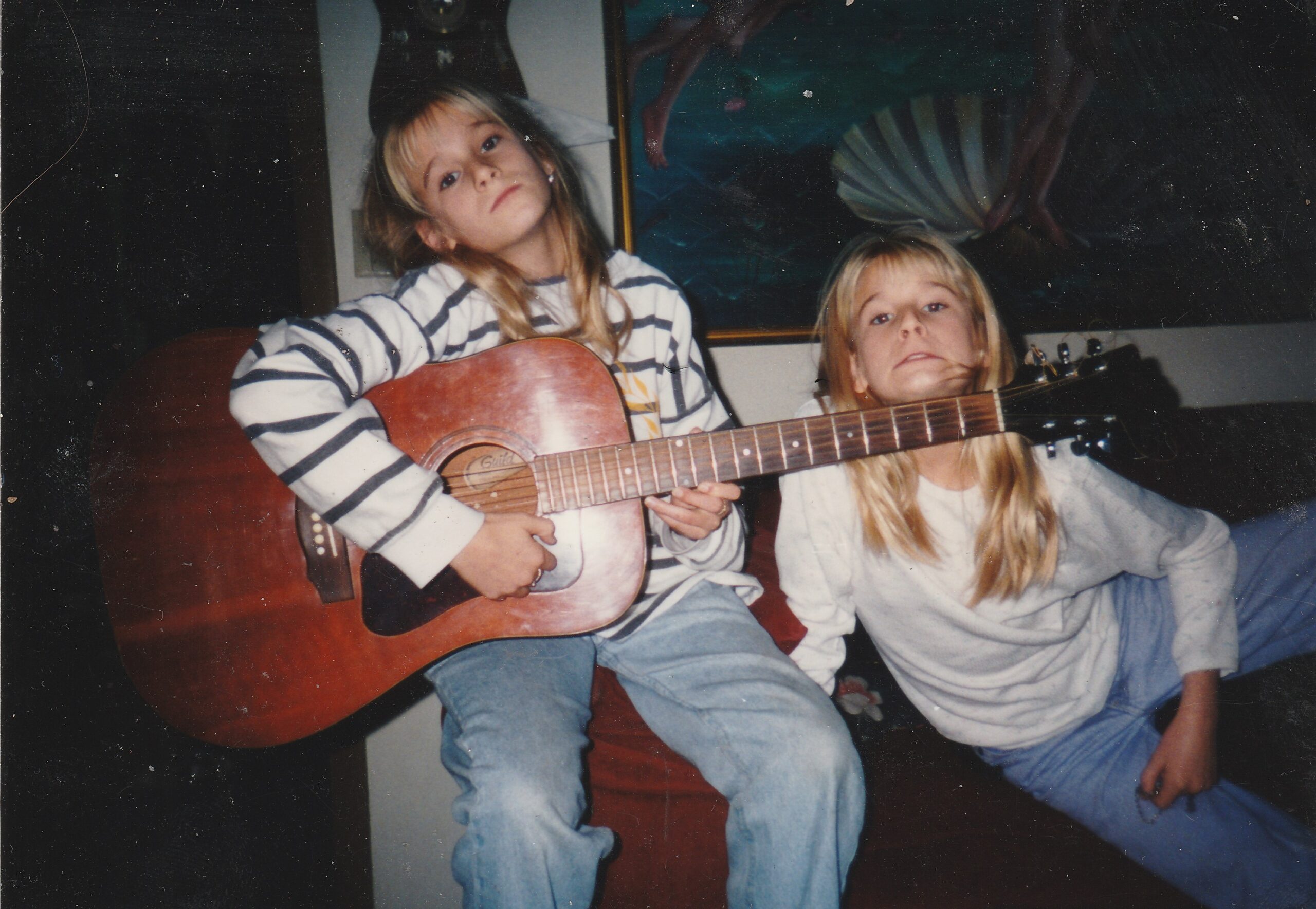
The twins were musical performers at an early age. Courtesy photo.
You’ve collaborated with a lot of great musicians over the years. Who are some of your favorites?
K: My favorite is collaborating with Gregory Alan Isakov. Anytime we were on stage with him was super magical. His shows are just magical. The audience is quickly falling in love all night, that’s what it feels like. When we toured with him, several times he’d have us come on stage and sing a song with him. My favorite of all time was just us three singing at Red Rocks. We opened for him and Ani DiFranco at Red Rocks and it was the best.
L: Career wise and life wise, it was the best.
K: Gregory knew how much we loved Ani and he just really wanted to make our dreams come true, so he asked us to open-open, and we got to meet Ani and we’ve developed a relationship. She’s so awesome. So that night we sang Gregory’s song, “She Always Takes it Black,” just the three of us to Red Rocks and you could hear a pin drop and there were 9,500 people there.
L: One of my favorite collabs is John Craigie. Every time we play shows together it’s family reunion vibes. We play Sandpoint with him mostly these days, and I just love his songs so much and the way we’ve crafted parts around them. I love how we all sound together. He’s just our best friend.
K: Yeah, me too. Equal.
The show at the Whiskey Jack Venue was one of the best I’ve seen you do in a while. What was your original vision for this venue, and how has that changed?
L: Last year we applied for a conditional use permit, which would allow us to have multiple events out here—weddings, retreats, reunions, maybe some concerts—and I put the max capacity at 500 which was a stupid move, because now that we’ve had a show out here it was definitely not 500. We don’t want that. People kind of freaked out. The neighbors really didn’t like the idea. … The conditions of approval were also really high … it would be an impetus to change that quaint, perfect, shitty little bridge [on our road], and that’s not what we’re going for. We don’t want to change this area at all, and that’s what the neighbors were upset about. It was frustrating because we wanted to say, “Don’t you know us? We’ve grown up here. We just want to share this with our neighbors.” But if they weren’t into it, it totally negated the whole thing. So during that process the planner told us as a property owner you’re allowed to host an event for up to 400 people without a permit. So we’re going to check in with the neighbors and see how it felt for them. We really care about what the neighbors think and don’t want to piss anybody off, so we want to just put on one or two shows per summer, and maybe a wedding here and there, but very minimal events. … The most beautiful part of that show for me was being on that stage we built with our family and friends who helped so much. We built this amphitheater and stairs and my mom did most of the steps out there, and it’s just so rewarding to see all the work we did. We need more lighting though—somebody fell in the pond.
How did moving to Portland influence your music moving forward?
K: In Sandpoint times we were way more folky and nature-y, very cheesy, and then Portland gave us a little more edge. We started going to shows and seeing more indie rock bands and that’s where we focused in on tone. We became obsessed with tone. And that’s when Niko joined the band and that was a huge change, he really changed our sound with his electric guitar vibes and his tones and weirdness.
L: Yeah, I think we got a little more weird, a little more dirty. I appreciated the Portland city grime on our music.
K: Portland rubbed off over time and changed our sound a lot. All the friends we’ve met along the way and their influences on us has totally rubbed off.
What’s something about each of you that not many people know?
K: Well, I almost died three times.
L: Yeah, she had three near death surgeries.
K: In my body, not because of accidents or anything. My own body has turned against me three times. My appendix burst when I was 4, I had a blood clot when I was 18 that lived in me for 6 months, so I was a ticking time bomb, and I had a bowel resection surgery last summer. Six inches were taken out of my small intestine. I just woke up one day and had a stomach ache. … I’m realizing how traumatic it is. I’m a healthy woman, and to know that can happen to you for no reason is terrifying. So that’s scary. But I’m still alive, can’t get me down, body.
L: What’s mine? I’m becoming kind of a handy-woman. I started learning a bunch of stuff about being a handy-woman.
K: She can saw, she can screw! We’re actually inside a bunkhouse that she built, also kinda me and mom helped.
L: I don’t just play banjo!
What does the future hold for touring?
K: We’re not chomping at the bit. We just had two shows cancel because of COVID. We still are very hesitant. We haven’t been dealing with it too much because we didn’t have much booked. The whole moral dilemma falls on the artists way more than it should. We’re not anxious to deal with touring during a pandemic. It’s not what we want. … Luckily we got two PPP loans for our company and we’re feeling okay. We want to just slowly do shows we really love and bring us joy at first, but I’m going to start a family soon, so who knows? We’re just taking it slow.
L: We’re just going to see what happens tomorrow.
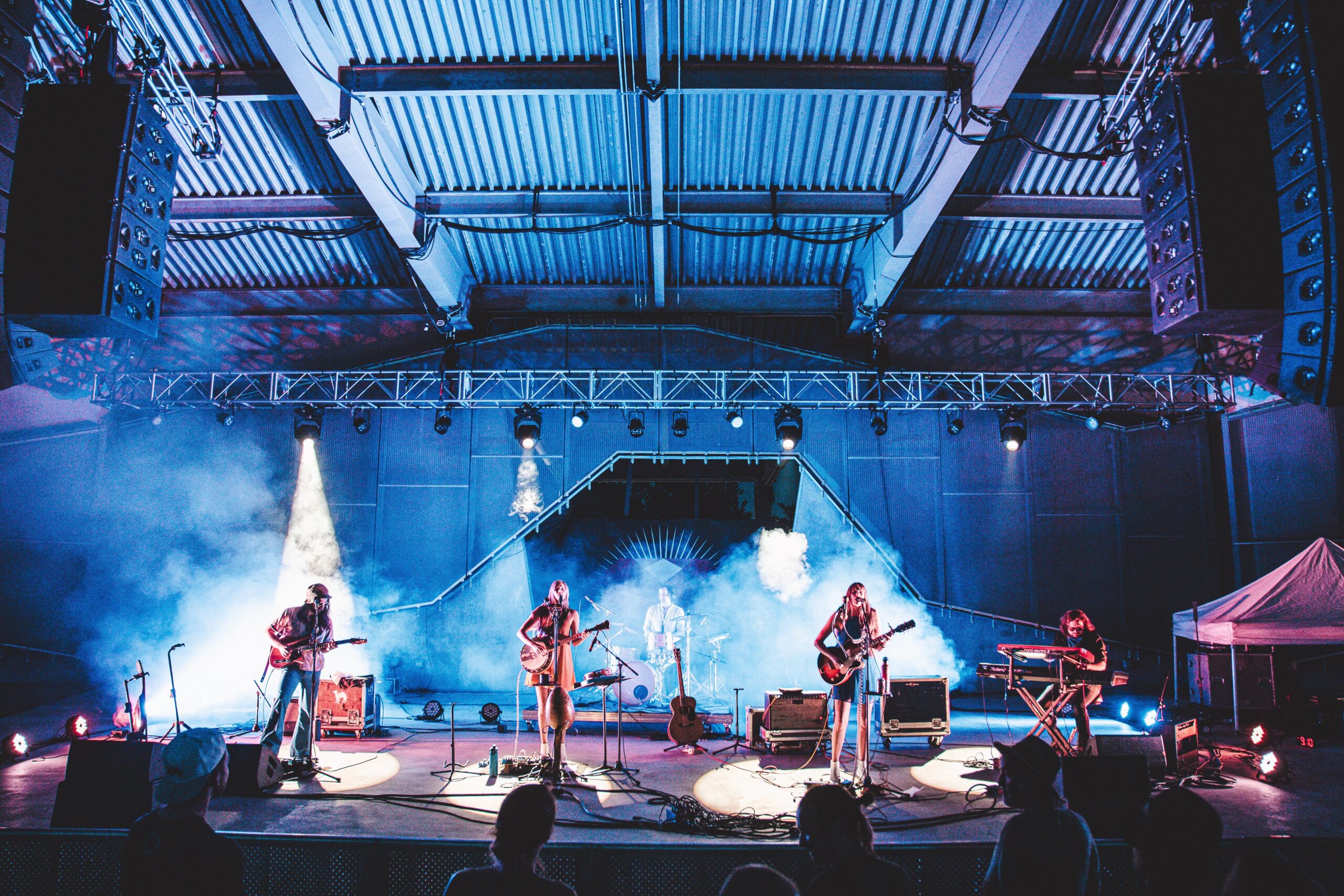
The Shook Twins in performance at Denver’s Levitt Pavilion. Photo by Veronica Holyfield.
How did open mic at the Downtown Crossing in the mid 2000s affect your decision to pursue music full time?
L: It defined us. What was it, 2005? That time, our crew of friends, all of us vagrants, artists, and poets, that open mic at Downtown Crossing started it all for us. That was when we took a break from college. We came back to figure out what to do.
K: The open mic was this magical place, this padded little safety net of all of our friends that encouraged us to impress each other.
Was choir sort of your gateway drug to wanting to play music full time?
L: Yeah, I think it was. When we were in choir, I never thought, “I’m going to be on stage and write my own music.” I never thought that in high school. But the gateway moment for me at least was that choir performance we did for Spring Fling when I beatboxed and we did “Killing Me Softly.” I had just learned to beatbox from this Mormon a cappella group that was touring through. They were called The Standards and they came to the school as like an anti-drug kind of assembly vibe.
K: Yeah, the Mormon a cappella group trying to convince people not to do drugs. It was totally a “Saved by the Bell” episode.
L: But the beatboxer dude was trying to give examples and teach a bunch of choir girls how to beatbox, and I was one of them. He called me up in front of the assembly and the school and I beatboxed for like 10 seconds and almost peed my pants, and it was so cool and everyone loved it, so I was super into it. Later, after we did “Killing Me Softly,” everyone loved it and we got a standing ovation and I was like, “Okay, I can do this.”
K: That was senior year.
L: Then we went to college and music just started happening after we graduated. Our first gig was in 2004. We moved to Virginia, and we played at a place called O’Charlie’s, which was some stupid chain, but they paid us $300 and it was a three-hour gig. When we started to do our Winery gig, they asked us how much we wanted and we said, “How about $300?” and they said, “Uhh, how about $75?” and we just said, “Okay, that checks out.” But in choir with Jon Brownell, that’s where we learned harmonies and did scales every day and learned the basics of the voice. I always feel like a mediocre instrumentalist, when we compare ourselves to other peers that are shredding.
K: Our vocals are definitely our main instrument though. I think of it like we became fluent in a language, harmony-wise, because you don’t even think about it, you just sing the harmony. Some people ask us to teach them how to harmonize and we say “I don’t know, you just do it.” Just hear the counter part harmony for years and years every day. It’s like a foreign language.



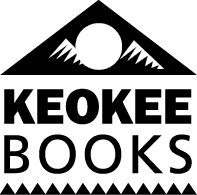
Leave a Reply